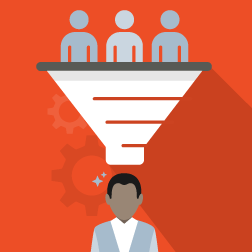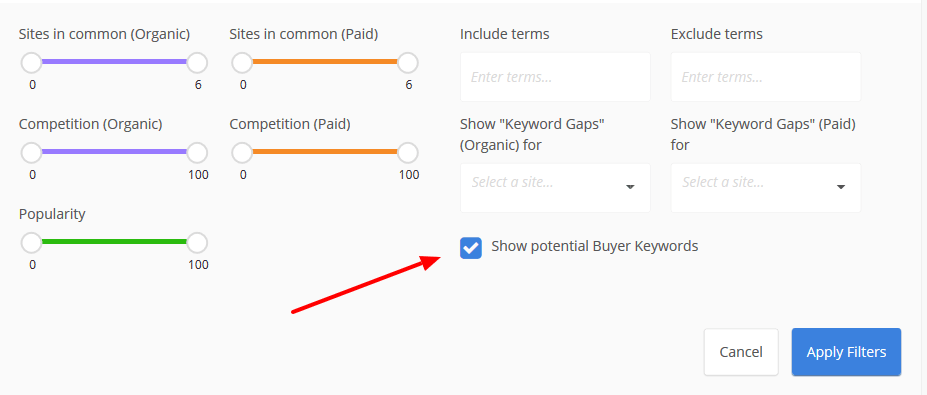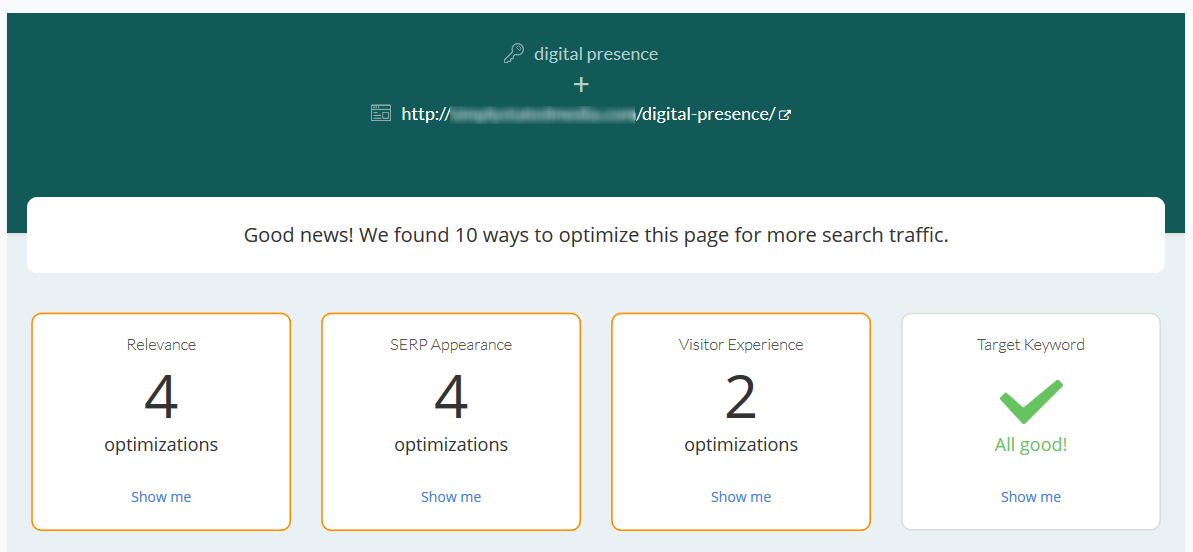
You can’t have a strong conversion process without a strong lead generation marketing strategy. Lead generation must be effective from the moment your audience first hears about your brand if you want to support a strong conversion strategy.
So if you want to develop a more well-rounded inbound sales process, use these four tactics to increase the effectiveness of your lead generation marketing.
4 Lead Generation Marketing Tactics
Tactic No. 1 Target Keywords Based on Audience Intent
Audience targeting has evolved over the past few years. Gone are the days when marketers would identify customers based only on their gender, age, position within a company (for b2b lead generation), and other miscellaneous demographics.
Today’s targeting focuses on audience intent as much as audience demographics. Instead of targeting audiences based on who is buying, brands focus on what and when customers want to buy.
Brands can target audiences based on the intent of their online searches. They can focus on targeting buying keywords that are:
- Informational keywords that show intent to find general information about a problem or topic
- Navigational keywords that show intent to find information about a specific brand, product, or service
- Transactional keywords that show intent to purchase a product or service
When you assign intent to the keywords you target and create SEO content based on that intent, you will attract more qualified leads.
For example, if you target a transactional keyword, the content on the page for that keyword should guide a prospect right into buying. Whereas content for an informational keyword should offer a more subtle conversion, such as signing up for an informative e-book.
For help identifying transactional keywords that exist at the end of the sales funnel (and will, therefore, convert more traffic), Alexa offers a helpful Competitor Keyword Matrix tool that highlights buying keywords. When you run the keyword report and check the box for “buying keywords,” you receive a list of terms that customers are using when they are ready to buy. This report will help you target more keywords toward the end of the sales funnel.
Tactic No. 2 Develop Content Based on Purchase Funnels
When used correctly, content can be one of the most powerful lead generation tools in a marketer’s arsenal. Strategic content marketing considers the multiple stages of the purchase funnel and utilizes content to move customers through the entire sales process.
Smart content marketers create content for all phases of the sales funnel while planning their editorial calendars. They create content for the stages:
- Attract
- Educate
- Convert
- Nurture
Each of those buying stages is important and requires its own content to convince customers to buy. After all, you wouldn’t try to pitch a loyalty program to someone who had never heard of your brand, and you wouldn’t try to sell your products to someone who already buys them.
Consider each buying stage as you develop lead generation ideas. Create content that hits each phase so that you can attract potential buyers at all interest levels.
Tactic No. 3 Utilize Behavioral Email Marketing
Email marketing is another one of the lead generation strategies that has evolved over the past few years. Brands used to mass-blast their lists and send the same message to hundreds of people.
Today, marketers are taking a more strategic approach to email marketing by segmenting customers based on behavior and intent, rather than their demographics.
Behavioral email marketing tracks customer actions and delivers messages based on their buying cycles and habits. There are good and bad ways to do this:
- Bad Strategy: A travel tour company emails a customer a list of suggested vacations a day after the customer books a trip.
- Good Strategy: A travel tour company emails a customer a list of suggested vacations at the same time of the year that the customer booked their last trip.
The first instance is reactive. The company might use an algorithm to promote items similar to what customers bought, which means that customers might receive emails promoting the same locations or similar tours until they opt-out of marketing messages. The message isn’t relevant to the buying cycle as someone who just books a trip isn’t as likely to book a new tour right away.
The second email for lead generation marketing is proactive because it uses the customer’s behavior to see what they might want next. If the customer typically books a large tour in the summer, the company can either focus its efforts on driving customer leads for their next summer trip or try to upsell them to a winter tour as well.
By tracking buyer behavior, lead generation marketing professionals can use email to effectively communicate with customers and convert prospects.
Tactic No. 4 Only Drive Traffic to Targeted Landing Pages
The final tactic brands should develop for their lead generation marketing plan is creating strategic landing pages. The landing page is often the forgotten middle step between the outreach process and the conversion step. It’s a step in the middle level of marketing, or MOFu marketing, that often makes or breaks a customer’s decision to fill out a contact form.
Let’s say a customer receives an engaging email, interacts with a social media post, or learns about your plan through an influencer. They’re excited about what you have to say and want to learn more, but then they realize you’re driving them to a generic sales page or one-size-fits-all blog post.
You caught their attention with your outreach, but you couldn’t convert them because you didn’t deliver on a promise or provide what they were looking for. So you must drive traffic to only targeted landing pages that give audiences the information they want and need.
There are a few ways you can analyze your traffic and look for problems with your landing pages. The first is studying your analytics. Look at your pages with the highest bounce rates and the sources they come from. Maybe a blog article or social campaign has a higher bounce rate for a page because it’s a bad fit for the customer.
You can also look at the keywords that are drawing people to your landing pages. It could be that your page is ranking for a keyword that doesn’t match the landing page’s intent or topic. To find out if your landing page is not targeting the right term, you can use Alexa’s On-Page SEO Checker. Enter your landing page URL and target keyword and receive a report on how to better optimize the page to focus on your targeted term or phrase.
Both of these tactics will help you improve your landing pages and lead to converting more of your traffic.
Advance Your Lead Generation Marketing Even More
Successful lead generation marketing requires strategy. Sales and marketing teams need to work together and identify gaps so they can fill them. Sometimes this means targeting new audiences while, other times, the solution lies in a better email campaign or landing page.
By keeping the customer journey and intent at the forefront of your lead generation strategies, your company can create marketing plans that drive customers to complete those contact forms and trigger conversions.
For more tips on developing strategies that will increase both lead generation and conversation rates, check out Alexa’s marketing library that includes e-books, templates, and guides to help you with your sales funnel from start to finish.







